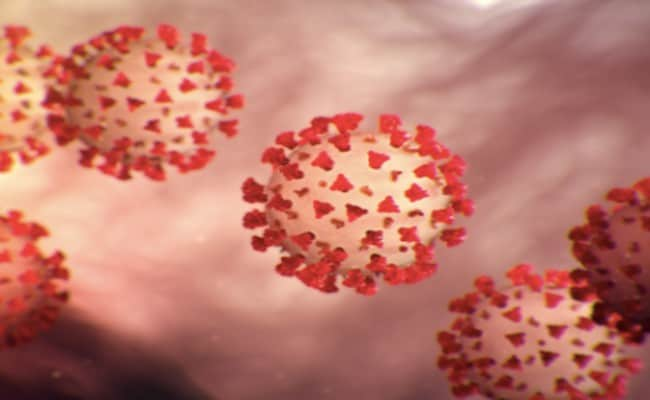[ad_1]

SARS-CoV-2, the virus that causes COVID-19, assaults the physique in a number of steps. (File)
New Delhi:
Scientists within the US have recognized some present compounds that may inhibit two key proteins required by the novel coronavirus to achieve entry into human cells and reproduce, an advance that will assist develop new efficient anti-viral medicine for COVID-19.
SARS-CoV-2, the virus that causes COVID-19, assaults the physique in a number of steps. Gaining entry into cells deep throughout the lungs and hijacking the human host cell’s equipment to churn out copies of itself are two of the earliest steps — each important for viral an infection.
The new research, revealed within the journal Science Advances, discovered that some present compounds can inhibit each the primary protease (Mpro), a key viral protein required for SARS-CoV-2 replication inside human cells, and the lysosomal protease cathepsin L, a human protein vital for viral entry into host cells.
“If we can develop compounds to shut down or significantly reduce both processes — viral entry and viral replication — such dual inhibition may enhance the potency of these compounds in treating the coronavirus infection,” stated Yu Chen, an affiliate professor on the University of South Florida Health (USF Health) within the US.
“Metaphorically, it’s like killing two birds with one stone,” Yu Chen, co-principal investigator of the research, stated.
The staff, together with the researchers from the University of Arizona (UA), constructed upon their earlier work, which recognized and analysed a number of promising, present antiviral medicine as candidates to deal with COVID-19.
All the candidates chosen to pursue goal Mpro to dam the replication of SARS-CoV-2 inside human cells have been grown within the laboratory.
Two of the compounds, calpain inhibitors II and XII, didn’t present as a lot exercise in opposition to Mpro as one other drug candidate referred to as GC-376 in biochemical checks, the researchers stated.
However, the calpain inhibitors, particularly XII, really labored higher than GC-376 at killing SARS-CoV-2 in cell cultures, stated lead creator Michael Sacco, a doctoral scholar in Yu Chen’s laboratory.
“We figured if these calpain inhibitors were less effective at inhibiting the virus’s main protease, they must be doing something else to explain their antiviral activity,” Sacco stated.
They discovered from analysis performed by different teams, together with collaborators and research co-principal investigator Jun Wang, from UA, that calpain inhibitors can block different proteases, together with cathepsin L, a essential human host protease concerned in mediating SARS-CoV-2 entry into cells.
In this newest research, the researchers used superior methods, significantly X-ray crystallography, to visualise how calpain inhibitors II and XII interacted with viral protein Mpro.
They noticed that the calpain II inhibitor match as anticipated into the focused binding websites on the floor of the SARS-CoV-2 fundamental protease.
They additionally found that the calpain XII inhibitor adopted a novel configuration — known as “an inverted binding pose” — to tightly match into Mpro energetic binding websites.
An in depth match optimises the inhibitor’s interplay with the focused viral protein, lowering the enzyme exercise that helps SARS-CoV-2 proliferate, the researchers stated.
“Our findings provide useful structural information on how we can design better inhibitors to target this key viral protein in the future,” Yu Chen stated.
He famous that apart from the elevated efficiency, or desired drug impact at a decrease dose, of concentrating on each viral protease Mpro and human protease cathepsin L, one other advantage of twin inhibitors is their potential to suppress drug resistance.
“So a dual inhibitor makes it more difficult for antiviral drug resistance to develop, because even if the viral protein changes, this type of compound remains effective against the human host protein that has not changed,” Yu Chen added.
[ad_2]
Source















